Selective inhibition of stromal mechanosensing suppresses cardiac fibrosis
- PMID: 40307543
- PMCID: PMC12176515
- DOI: 10.1038/s41586-025-08945-9
Selective inhibition of stromal mechanosensing suppresses cardiac fibrosis
Abstract
Matrix-derived biophysical cues are known to regulate the activation of fibroblasts and their subsequent transdifferentiation into myofibroblasts1-6, but whether modulation of these signals can suppress fibrosis in intact tissues remains unclear, particularly in the cardiovascular system7-10. Here we demonstrate across multiple scales that inhibition of matrix mechanosensing in persistently activated cardiac fibroblasts potentiates-in concert with soluble regulators of the TGFβ pathway-a robust transcriptomic, morphological and metabolic shift towards quiescence. By conducting a meta-analysis of public human and mouse single-cell sequencing datasets, we identify the focal-adhesion-associated tyrosine kinase SRC as a fibroblast-enriched mechanosensor that can be targeted selectively in stromal cells to mimic the effects of matrix softening in vivo. Pharmacological inhibition of SRC by saracatinib, coupled with TGFβ suppression, induces synergistic repression of key profibrotic gene programs in fibroblasts, characterized by a marked inhibition of the MRTF-SRF pathway, which is not seen after treatment with either drug alone. Importantly, the dual treatment alleviates contractile dysfunction in fibrotic engineered heart tissues and in a mouse model of heart failure. Our findings point to joint inhibition of SRC-mediated stromal mechanosensing and TGFβ signalling as a potential mechanotherapeutic strategy for treating cardiovascular fibrosis.
© 2025. The Author(s), under exclusive licence to Springer Nature Limited.
Conflict of interest statement
Competing interests: J.C.W. is a co-founder and member of the scientific advisory board of Greenstone Biosciences. H.M.B. is a cofounder and member of the scientific advisory board of Epirium Bio. The other authors declare no competing interests.
Figures

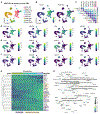
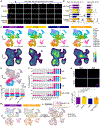

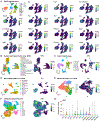
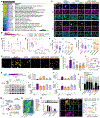



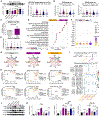
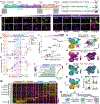
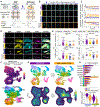



Similar articles
-
Inhibiting Fibronectin Attenuates Fibrosis and Improves Cardiac Function in a Model of Heart Failure.Circulation. 2018 Sep 18;138(12):1236-1252. doi: 10.1161/CIRCULATIONAHA.118.034609. Circulation. 2018. PMID: 29653926 Free PMC article.
-
Fibroblast Smad7 Induction Protects the Remodeling Pressure-Overloaded Heart.Circ Res. 2024 Jul 19;135(3):453-469. doi: 10.1161/CIRCRESAHA.123.323360. Epub 2024 Jun 20. Circ Res. 2024. PMID: 38899461 Free PMC article.
-
Yoda1 Inhibits TGFβ-Induced Cardiac Fibroblast Activation via a BRD4-Dependent Pathway.Cells. 2025 Jul 4;14(13):1028. doi: 10.3390/cells14131028. Cells. 2025. PMID: 40643546 Free PMC article.
-
Cellular crosstalk in fibrosis: Insights into macrophage and fibroblast dynamics.J Biol Chem. 2025 Jun;301(6):110203. doi: 10.1016/j.jbc.2025.110203. Epub 2025 May 5. J Biol Chem. 2025. PMID: 40334985 Free PMC article. Review.
-
The Role of Cardiac Fibroblast Heterogeneity in Myocardial Fibrosis and Its Novel Therapeutic Potential.Int J Mol Sci. 2025 Jun 19;26(12):5882. doi: 10.3390/ijms26125882. Int J Mol Sci. 2025. PMID: 40565343 Free PMC article. Review.
Cited by
-
TFAP4 exacerbates pathological cardiac fibrosis by modulating mechanotransduction.Cell Insight. 2025 Jun 2;4(4):100256. doi: 10.1016/j.cellin.2025.100256. eCollection 2025 Aug. Cell Insight. 2025. PMID: 40612272 Free PMC article.
-
A sprayable exosome-loaded hydrogel with controlled release and multifunctional synergistic effects for diabetic wound healing.Mater Today Bio. 2025 Aug 5;34:102159. doi: 10.1016/j.mtbio.2025.102159. eCollection 2025 Oct. Mater Today Bio. 2025. PMID: 40822934 Free PMC article.
References
References (Materials and Methods)
MeSH terms
Substances
Grants and funding
- R01 HL163680/HL/NHLBI NIH HHS/United States
- F32 HL152483/HL/NHLBI NIH HHS/United States
- R01 HL130020/HL/NHLBI NIH HHS/United States
- R01 HL146690/HL/NHLBI NIH HHS/United States
- R01 HL141371/HL/NHLBI NIH HHS/United States
- R01 HL150693/HL/NHLBI NIH HHS/United States
- K99 HL166695/HL/NHLBI NIH HHS/United States
- K99 HL163443/HL/NHLBI NIH HHS/United States
- F32 HL173968/HL/NHLBI NIH HHS/United States
- R01 HL113006/HL/NHLBI NIH HHS/United States
- R01 HL145676/HL/NHLBI NIH HHS/United States
- R01 HL141851/HL/NHLBI NIH HHS/United States
LinkOut - more resources
Full Text Sources
Miscellaneous

